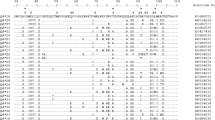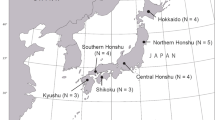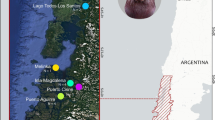Abstract
We have taken into account the possibility of identifying the cause of the selection of Rh negative individuals during the Paleolithic period, referring to the known data on Rh positive and Rh negative phenotype and the pathogenic agents inside the red blood cells. After having narrowed down the field, identifying the Babesia divergens as the most probable responsible agent for the selection of the Rh negative individuals, we discuss the epidemiologic mechanism which may have intervened, and we evaluate the likelihood of this hypothesis in relation to the available data. We conclude that the following sequence is possible: Babesia divergens, Ixodes ricinus, Ursus spelaeus and/or arctus, caves, Rh negative selection. This would appear to be confirmed by the coinciding of the distribution areas of Rh negative individuals, Ursus spelaeus and arctus, Ixodes ricinus and Babesia divergens. We have also mentioned the possibility that the extinction of Neanderthal Man had the same cause as the selection of the Rh negative individuals.
Similar content being viewed by others
References
American Association of Blood Banks, 1989. Technical Manual, GMC, Milano.
Ammermann A.J. and Cavalli-Sforza, L., 1986. La transizione neolitica e la genetica di popolazione in Europa. Boringhieri, Torino. Atlante Storico Garzanti, 1973. Garzanti, Milano.
Atlante Storico, 1972. Istituto geografico De Agostini. Novara.
Bargagna M., Domenici R. and Giari A., 1988. Applicazioni Medico-Legali della Immunoematologia. Masson, Milano, 1988.
Barraclough G., 1979. Il Grande Atlante Storico Mondadori-Times. Arnoldo Mondadori Editore, Milano.
Blanchard D., Bloy C., Hermand D., Cartron J.P., Saabori A.M., Smith B.L. and Agre P., 1988. Two-dimensional iodopeptide mapping demonstrates that erythrocite RhD, c, and E polypeptides are structurally homologous but nonidentical. Blood, 72(4): 1424–7.
Bloy C., Hermand P., Cherif-Zahar B., Sonneborn H.H. and Cartron J.P., 1990. Comparative analysis by two dimensional iodopeptide mapping of the RhD protein and LW glycoprotein. Blood, 75(11): 2245–9.
Borzatti von Lowenstern E., 1989. Paleontologia Umana. Parte II. Firenze.
Broglio A., 1984. L'origine dell'Uomo e le più antiche culture. In: “Archeologia”, Mondadori, Verona.
Broglio A., Il Paleolitico medio in Europa: Spiritualità. In op. cit.. (Mallegni F. 1986).
Campanacci, D., e Coll., 1969. Manuale di Patologia Medica, Edizioni Minerva Medica. Torino.
Capecch V; and Messeri, P., 1979. Antropologia, Società Editrice Universo, Roma.
Cassoli P.F. and Tagliacozzo A., L'evoluzione delle associazioni faunistiche nei giacimenti preistorici del Riss-Wurm e del Wurm antico. In op. cit. (Mallegni, F., 1986) I Neandertaliani. Centro Stampa Offset. Viareggio.
Ceram C.W., 1972. Il Primo Americano. Einaudi Editore, Torino.
Chiarelli B., 1980. L'origine dell'uomo. Editori Laterza. Roma-Bari, 1983.
Colin Y., Chérif-Zahar B., Le Van Kim C., Rayna V., Van Huffel, V. and Cartron J.P., 1991. Genetic basis of the RhD-Positive and RhD-negative Blood Group Polymorphism as Determined by Southern Analysis. Blood, 78, 10: 2747–2752.
Crispens C.G. jr, 1972. Elementi di Genetica Medica. Piccin, Padova.
D'Errico F. and Giacobini G., 1986. Gli ultimi Neandertaliani e la comparsa dell'Uomo moderno in Europa. In I Cacciatori Neandertaliani. Jaca Books, Milano.
D'Errico F. and Giacobini G., Orso delle caverne e uomo di Neandertal: fortuna di un mito e ricerca stratigrafica di una realtà. In op. cit. (D'Errico et al.,.
De Carneri I., 1965. Parassitologia generale ed umana. Casa Editrice Ambrosiana, Milano.
De Vetten, M.P., Agre, P., 1988. The Rh polypeptide is a major fatty acid-acylated erythrocyte membrane protein. J. Biol. Che, 5, 263(34), 18193–6.
Delpech F., Les animaux au temps de Néandertal. In op. cit. (Dossier Histoire et Archeologie, 1988): 60.
Dodd B.E. and Lincoln, P.J., 1980. I gruppi sanguigni. Piccin Editore, Padova.
Dossier Histoire et Archeologie, 1988. 124: 20–21.
Enciclopedia Italiana., 1949. Istituto Poligrafico dello Stato. Roma, Orso.
Esposito, R., 1985. Parassitologia Clinica e Medicina Tropicale. Masson, Milano.
Fornaciari G., Tentativo di indagine paleodemografica. In op. cit. (Mallegni, F.,.
Goodwin G.C., 1970. Bear. In Collier's Encyclopedia. Crowell-Collier Educational Corporation, U.S.A., 1970.
Goudeman M. andSalmon Ch., 1983. Immunoematologia e Immunogenetica, Marrapese Editore DEMI, Roma. Grande Dizionario Enciclopedico, 1970. UTET. Torino: Orso.
Heim J.L., L'Homme de Neandertal et l'evolution. In op. cit. (Dossier Histoire et Archeologie, 1988): 22–33.
Il Milione. 1963. Istituto Geografico De Agostini. Novara.
Kutén B., 1972. L'orso delle caverne. Le Scienze, 46, 8: 62–69.
“La Grecia culla dell'Umanità”, 1990. In Tempo Medico, 30 Marzo 1990: 33.
Mallegni F., 1986. I Neandertaliani. In I Neandertaliani. Centro Stampa Offset. Viareggio.
Mandell G.L., Douglas R.G. and Bennett J.E., 1985. Principles and practice of Infectious Diseases. Wiley & Sons, New York.
Manson, 1987. Tropical Diseases.
Marshack A., La Pensée symbolique et l'art. In op. cit.(Dossier Histoire et Archeologie, 1988). 80–90.
Martinetti M., Daielli C. and Cuccia M., 1991. Il polimorfismo HLA nella suscettibilità o resistenza alle malattie. La T.d.S., 2: 133–138.
Moroni M., Esposito R. and De Lalla F., 1990. Manuale di Malattie Infettive. Masson, Milano.
Mourant A.E., 1954. The distribution of the human blood groups. Blackwell, Oxford.
Mourant A.E., Kopec, A.C., and Domaniewska-Sobczak, K., The distribution of the human blood groups and other polymorphisms. 2nd ed. Oxford University Press. Oxford, 176.
Natura Viva, 1959. Enciclopedia sistematica del regno animale. Vallardi, Milano, Vol. I: I Mammiferi.
Patou M., La caccia e il depezzamento dei grandi mammiferi da parte dei Neandertaliani. In op. cit. (D'Errico et al..
Puech P.F., Usura dentaria e l'alimentazione dei Neandertaliani. In op. cit., (D'Errico et al.,.
Race R.R., and Sanger, R., 1968. Blood Groups in Man. Blackwell, Oxford.
Radmilli A.M., 1974. Dal Paleolitico all'Età del Bronzo. In Popoli e Civiltà dell'Italia antica. Biblioteca di Storia Patria. Stabilimento Tipografico Bocci, Roma.
Radmilli A.M., L'uomo e l'ambiente. op. cit. (Radmilli A.M.,.
Radmilli A.M., 1974. L'uomo e l'ambiente. Op. cit. (Radmilli A.M., 1974)..
Renault-Miskovsk J., L'environment vegetal des Néandertaliens. In op. cit. (Dossier Hisotire …, 1988): Dossier Histoire et Archeologie: 68.
Rossi de Vermandois C., 1989. Ineguale distribuzione topografica dei soggetti Rhesus negativi nel territorio di Arezzo Il Cesalpino 3: 153–157.
Ruffiè J., Emotipologia e Antropologia: uno studio sintetico; in op. cit. (Goudeman,.
Saabori A.M., Smit B.L. and Agre P., 1988. Polymorphism in the Mr 32.000 Rh protein purified from Rh (D)-positive and-negative erythrocytes. Procl. Natl. Acad. Sci. USA 85 (11): 4042–5.
Sergi 1967, citato in Radmilli A.M.: op. cit. (Radmilli A.M., 1974).
Tillier A.M., Croissance et developpement chez les Néandertaliens. In op. cit. (Dossier Histoire …, 1988) Dossier Histoire et Archeologie:34.
Vandermeersch B., L'extintion des Néanderthaliens. In op. cit. (Dossier Histoire, …, 1988) Dossier Histoire et Archeologie: 91.
Vandermeersch B., A la découverte des Néandertaliens. In op. cit. N^24: 6–10.
Varma M.G.R., Tick-borne diseases. In Geographical distribution of anthropod-borne diseases and their principal vectors. WHO VBC. 89, 967: 55–70.
Vogel F., Pettenkofer H.J. and Helmbold W., 1962; cit. in Schwidetzky I. Die neue Rassenkunde. G. Fischer. Stuttgart.
White R., 1989. La rappresentazione figurative nel Paleolitico. Le Scienze, 1989, 253: 80–88.
Author information
Authors and Affiliations
Rights and permissions
About this article
Cite this article
Rossi de Vermandois, C., Accorsi, A. An hypothesis about the selection of the Rh negative individuals. Int. J. Anthropol. 7, 9–18 (1992). https://doi.org/10.1007/BF02447865
Issue Date:
DOI: https://doi.org/10.1007/BF02447865




